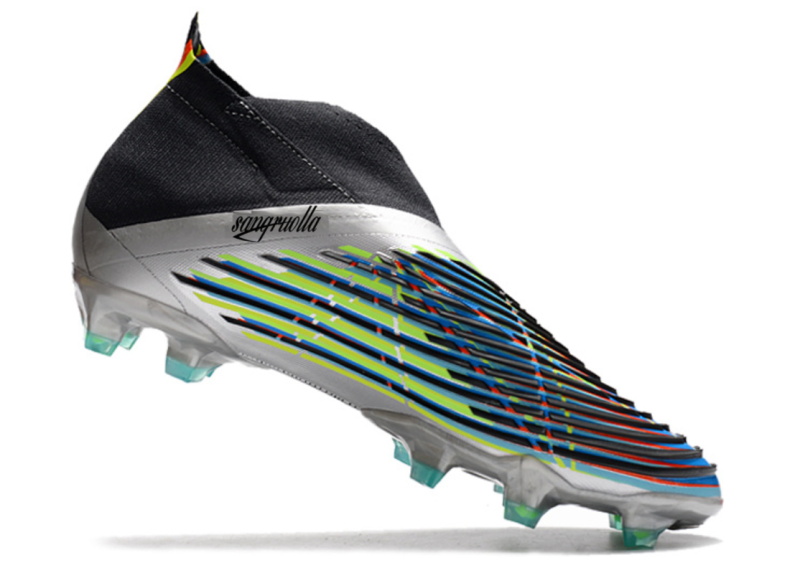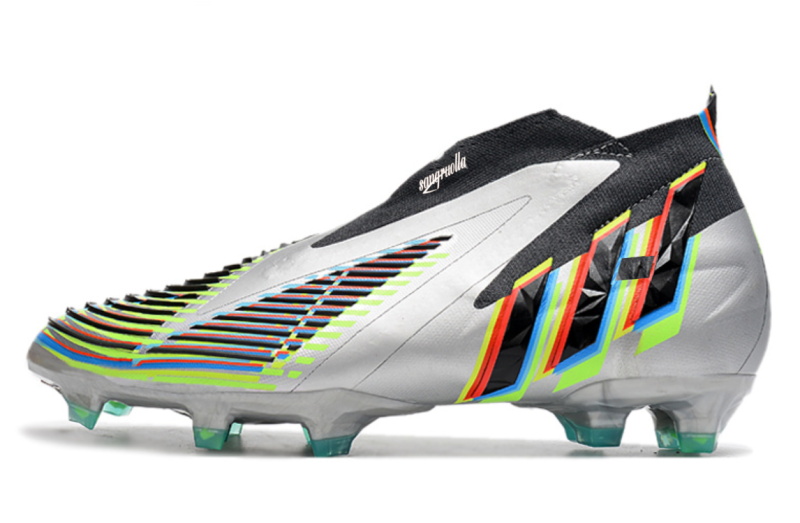In the world of football, the right footwear can make all the difference in a player’s performance on the field. Among the various types of football shoes available, FG (Firm Ground) football shoes stand out for their unique features that cater to specific playing conditions and styles. In this article, we will delve into what sets FG football shoes apart from other types of football shoes, exploring their design, construction, and advantages.
The Versatility of Firm Ground (FG) Football Shoes
When it comes to playing on natural grass pitches, FG football shoes are the preferred choice for many players. This type of footwear is specifically engineered to provide optimal performance on firm, natural surfaces. Unlike shoes designed for artificial turf or indoor use, they are tailored to offer stability, traction, and comfort on traditional grass pitches. Their versatility allows players to confidently navigate various playing conditions, making them a popular option for both training and match play.

Design and Construction
FG football shoes are meticulously crafted to meet the demands of outdoor play. These shoes typically feature studs or cleats that are strategically positioned to provide grip and traction on firm ground surfaces. The configuration of the studs is crucial in ensuring stability and maneuverability while minimizing the risk of slippage during quick directional changes and sprints.
The upper of these shoes is often made from durable materials like leather, synthetic leather, or advanced synthetic textiles. This robust design not only ensures durability but also provides a snug and supportive fit for the player’s foot. Furthermore, the outsole is designed to withstand the rigors of natural grass pitches, resisting abrasion and impact. Overall, it is a shoe tailored to meet the demands of outdoor football, ensuring maximum performance and comfort.
Advantages of FG Football Shoes
- Enhanced Traction: The stud configuration of FG football shoes is optimized to deliver maximum traction on firm ground surfaces, allowing players to accelerate, decelerate, and change direction with confidence.
- Stability and Support: The firm ground studs provide stability, preventing excessive slippage and helping players maintain control during dynamic movements. This feature is particularly valuable when playing on natural grass, where unpredictable surface conditions can impact stability.
- Durability: They are built to endure the rigors of outdoor play, boasting rugged construction that withstands the abrasive nature of natural grass surfaces, thereby extending the lifespan of the footwear.
- Versatility: While FG football shoes excel on natural grass pitches, they are also suitable for use on some artificial surfaces, offering a degree of adaptability across different playing environments.

Distinction from Other Football Shoe Types
Understanding how FG football shoes differ from other varieties is essential for players seeking the most suitable footwear for their specific needs. Here are some key distinctions:
- FG vs. SG (Soft Ground) Football Shoes: While both FG and SG football shoes are designed for natural grass pitches, they cater to distinct playing conditions. FG shoes are ideal for well-maintained, dry pitches where the ground is firm, providing reliable traction without excessively penetrating the surface. In contrast, SG shoes feature longer, detachable studs suited for soft, wet playing surfaces, preventing the player from sinking into the ground.
- FG vs. AG (Artificial Ground) Football Shoes: AG football shoes are engineered to optimize performance on modern artificial turf surfaces. Unlike FG shoes, which rely on shorter, more numerous studs, AG shoes feature a combination of conical and bladed studs designed to provide stability and support without causing damage to the synthetic turf. The adaptability of FG shoes to certain artificial surfaces makes them a versatile choice for players who frequently transition between natural and artificial pitches.
- FG vs. Indoor Football Shoes: Indoor football shoes, also known as futsal shoes, are tailored for use on hard, smooth indoor surfaces. They typically feature non-marking rubber outsoles that offer excellent traction on polished floors, providing the necessary grip for swift movements and ball control within confined spaces. In contrast, FG football shoes are optimized for outdoor use on natural grass, emphasizing stability and traction on firm ground.
Selection and Care
When choosing FG football shoes, players should consider factors such as their position on the field, playing style, and the predominant weather and pitch conditions they encounter. For instance, forwards and wingers may prioritize lightweight, agile designs that facilitate quick movements and acceleration, while defenders and midfielders might value stability and durability for robust play in high-traffic areas.
Additionally, proper care and maintenance are essential for preserving the performance and longevity of FG football shoes. After each use, it’s important to remove dirt and debris from the studs and upper material, allowing the shoes to air dry naturally. Regular cleaning and conditioning of the leather or synthetic materials can help prevent deterioration and maintain the shoe’s structural integrity.
Technological Innovations
The evolution of football footwear has seen the integration of advanced technologies aimed at enhancing comfort, performance, and injury prevention. Many leading sports brands have introduced proprietary innovations in their FG football shoe lines, incorporating cushioning systems, adaptive lacing mechanisms, and lightweight materials to optimize player experience on the field.
One notable advancement is the utilization of knitted or woven uppers, which offer a sock-like fit and enhanced breathability while maintaining the necessary support and structure. This innovation not only enhances overall comfort but also contributes to a more responsive and natural feel during ball contact and foot movements.
Furthermore, advancements in stud design, such as variable length or bladed patterns, aim to maximize traction and minimize stud pressure on the player’s feet, reducing the risk of discomfort or injury during intense play.
Conclusion
In conclusion, FG football shoes exhibit a distinctive set of characteristics that make them the go-to choice for players seeking reliable performance on natural grass pitches. From their carefully engineered stud configurations to their durable construction, they are tailored to meet the demands of outdoor play, offering enhanced traction, stability, and versatility. By understanding the unique attributes of these shoes and how they differ from other football shoe types, players can make informed decisions when selecting footwear that aligns with their playing style and the specific conditions of the pitch. Whether it’s a competitive match or a spirited training session, the right pair can provide the edge needed to succeed on the firm, natural terrain of the football field.
Related Products


